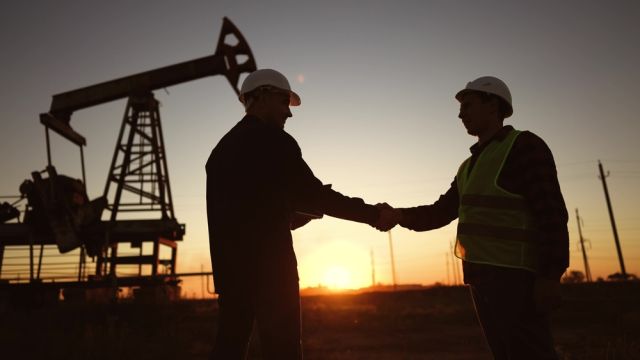
Wastewater injection is a growing cause of induced seismic activity, especially in oil and gas producing regions in the U.S., and without proper management solutions, operational capacities risk dwindling. (Source: Shutterstock)
History views human-caused earthquakes as rare phenomena. But, in the past decade, wastewater disposal efforts in oil and gas producing regions in the U.S. have triggered a hike in induced seismic activity.
The jump in seismicity is now driving up costs and inefficiencies for crude producers, according to water management experts.
In addition to infrastructure and safety concerns amid limited acreage and lots of activity, growing challenges for E&Ps and their water-injection efforts include operational capacity loss, water management logistical challenges and increased production costs.
This is especially relevant in the booming and increasingly maturing Permian Basin.
At the end of 2023, the Delaware and Midland basins were estimated to be the shale areas with the fastest increases in pressure. From 2018-2023, the Delaware Basin saw a roughly 15% spike in pressure, while the more mature Midland Basin rose by 4%, said Kelly Bennett, co-founder and CEO of water data company B3 Insight.
The percentages may not seem as alarming to operators at first glance, he said, but drilling through pressurized formations presents greater near- and long-term cost and operational risks for water management.
“You may have to change your casing strategy to adding several hundred thousand dollars for the cost of a well,” Bennett said recently at Hart Energy’s SUPER DUG Conference & Expo. “You may have a somewhat expensive shut-in program that you’ll have to negotiate with offset operators. That’s something that we hear happening more and more.”
E&Ps often have volumetric and pressure capacities for disposal each day. But, in most cases, Bennett said an operator will reach its pressure capacity long before reaching its volumetric max.
That leads to reduced operational capacity due to the relationship between rate of injection and pressure capacity in an environment, Bennett said.
“Operational capacity has actually been down in many places for over a year as we have more material injections,” Bennett said.
He compared the loss of operational capacity to a sink filling up. “If you start having less capacity for your disposal, you have to start thinking about different places to take the water.”
And transporting huge volumes of water long distances is difficult and expensive.
The Texas shift
Underground water injections occur after extracted oil and gas produces saltwater, which is then separated from the resource. Many operators inject the produced wastewater in geological faults that are prone to seismic events, according to the Texas Railroad Commission (RRC).
Certain regions in Texas and New Mexico are delineated by the RRC as seismic response areas (SRAs) varying in disposal restrictions and capacities.
Bennett noted that New Mexico has multiple injection restrictions in place, leading to a significant amount of water being transported in SRAs in Texas.
“The result of a lot of that shift in injection–and the sheer amount of water that’s being produced across the basin and disposed of–is that we have started to see an elevation in shale-formation pressures,” Bennett said
Water can be reused during the initial drilling and fracking of new wells, and many producers in the Permian are practicing this method.
However, the RRC also argues that water reuse is only a “partial solution.” At peak operational efficiency, reused water would only account for 40% of the water used in established wells.
“We have to be talking about solutions offered at a multimillion-barrels-per-day scale–at least in aggregate–to really affect a significant reduction in disposal,” Bennett said.
Efforts also are underway from the Texas Legislature to review the challenges of produced water. In 2021, the Texas Produced Water Consortium was established, administered through Texas Tech University, to recognize environmentally and economically feasible solutions on what to do with produced water.
Despite complications and restrictions, some companies are finding ways to temper seismicity through collaborative efforts in oil-rich regions.
Bennett said B3 is working with industry partners to develop a model that understands the connection between injection volumes and formation pressures over time.
“So, is it perfect? No, no model is perfect. But we've been able to work to get some consensus with a number of operators about how we should be thinking about pressure, how we should be interpreting it, understanding it, and then using that to help inform some decisions about drilling, things like a casing strategy,” Bennett said.
Recommended Reading
E&P Highlights: April 22, 2024
2024-04-22 - Here’s a roundup of the latest E&P headlines, including a standardization MoU and new contract awards.
E&P Highlights: May 6, 2024
2024-05-06 - Here’s a roundup of the latest E&P headlines, including technology milestones and new contract awards.
E&P Highlights: April 15, 2024
2024-04-15 - Here’s a roundup of the latest E&P headlines, including an ultra-deepwater discovery and new contract awards.
E&P Highlights: June 17, 2024
2024-06-17 - Here’s a roundup of the latest E&P headlines, including Woodside’s Sangomar project reaching first oil and TotalEnergies divesting from Brunei.
E&P Highlights: May 20, 2024
2024-05-20 - Here’s a roundup of the latest E&P headlines, including development of the Belinda Field in the North Sea to new contract awards and service company acquisitions.





